Key takeaways:
- Citizen science empowers individuals to contribute to research, enhancing both personal understanding and broader conservation efforts.
- Butterflies are crucial pollinators; their conservation is vital for maintaining ecosystem health and biodiversity.
- Effective butterfly observation includes using tools like binoculars and field guides, as well as engaging with local monitoring programs.
- Sharing findings fosters community connections and awareness, amplifying the impact of individual contributions to conservation efforts.
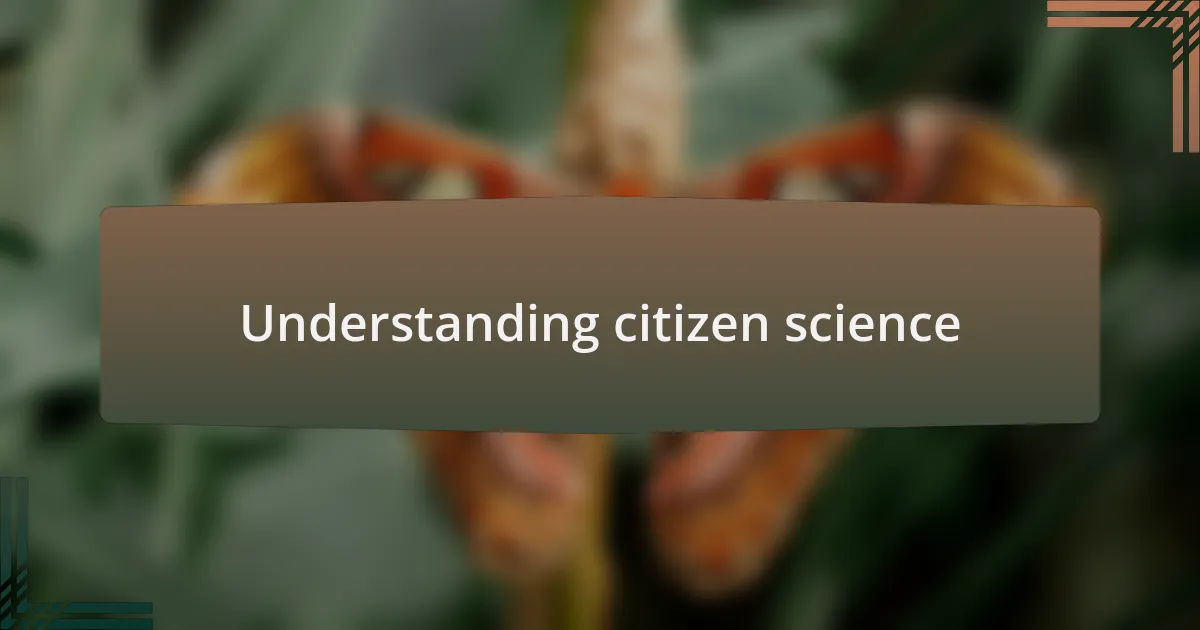
Understanding citizen science
Citizen science is a fascinating blend of community involvement and scientific discovery. I remember the first time I participated in a butterfly count; it felt incredible to be part of something bigger than myself. Seeing how my small contributions connected to broader conservation efforts made me realize that everyone can play a role in addressing environmental challenges.
At its core, citizen science empowers ordinary people to collect data and contribute to research. Have you ever wondered how your observations of local wildlife can help advance scientific knowledge? For me, this realization transformed my daily walks into meaningful explorations where each fluttering butterfly I spotted was a piece of a larger puzzle, contributing vital information to researchers.
Many people often overlook the impact of these collective efforts. I once shared my findings with a local conservation group only to learn that my observations filled gaps in their data regarding local butterfly populations. It was an eye-opening moment, reminding me that our everyday experiences can hold significant value in the quest for understanding and protecting biodiversity.
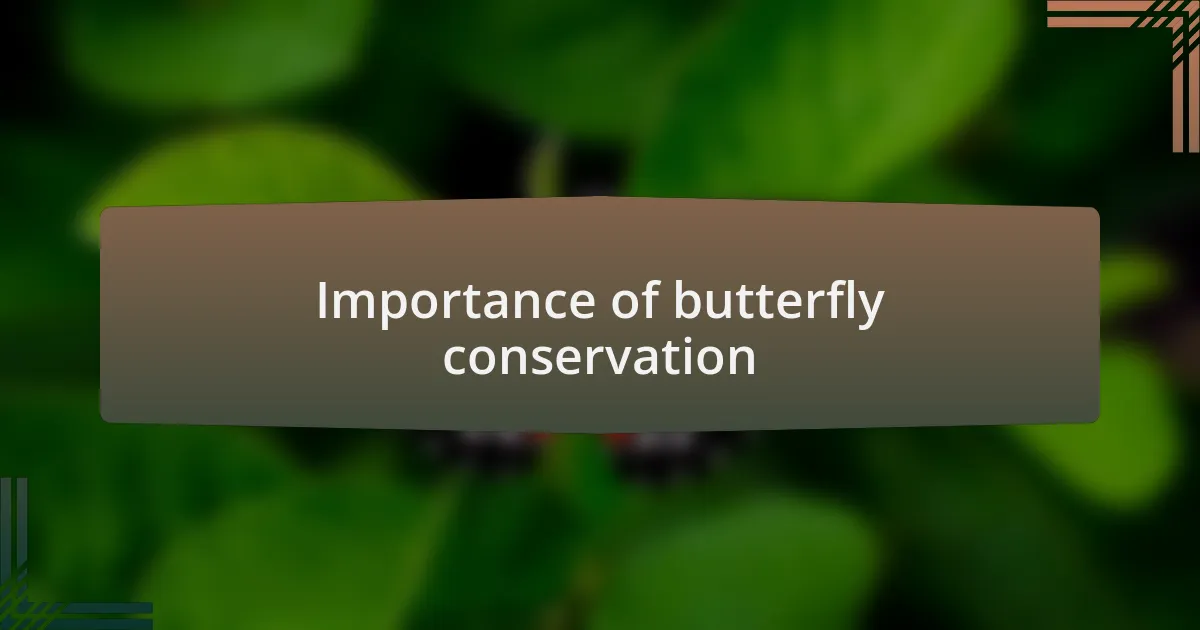
Importance of butterfly conservation
Butterflies are not just beautiful creatures; they play a crucial role in our ecosystem. Personally, I find it astonishing how they act as pollinators, helping plants thrive and enhancing biodiversity. Have you ever paused to think about how the loss of even one butterfly species could ripple through the entire habitat, affecting countless other organisms?
Conserving butterflies means safeguarding our natural world. I once attended a local event where experts discussed the alarming decline in butterfly populations due to habitat loss and climate change. Listening to their passionate insights made me realize that preserving these delicate insects is vital for maintaining healthy ecosystems, as they indicate the overall health of our environment.
Moreover, engaging in butterfly conservation efforts fosters a deeper connection with nature. I vividly recall the joy I felt when visiting a butterfly garden I helped create; watching butterflies fluttering about, I knew we were making a difference. Isn’t it rewarding to think that a simple act of planting native flowers can lead to thriving butterfly populations? That realization keeps me motivated to advocate for their conservation.

Tools for butterfly observation
When it comes to butterfly observation, having the right tools can significantly enhance your experience. Binoculars are a must for me; they allow for a closer look at these fascinating insects without disturbing their natural behavior. I remember the first time I spotted a shimmering Blue Morpho through binoculars; it felt like opening a window to a secret world right before my eyes.
Another essential tool is a field guide specific to butterflies. I always carry one during my outings, as it helps me identify various species and deepen my understanding of their habitats. The thrill of recognizing a butterfly I’ve only read about before is unforgettable. Isn’t it amazing how a simple book can connect you to the planet’s biodiversity in such a personal way?
Lastly, a notebook or a butterfly observation app can be invaluable for tracking sightings. I often jot down my experiences, noting the time, location, and even the flowers that attract certain species. Reflecting on my observations has not only improved my identification skills but has also deepened my appreciation for these resilient creatures. What’s more fulfilling than contributing to citizen science by documenting butterfly activities in your area?
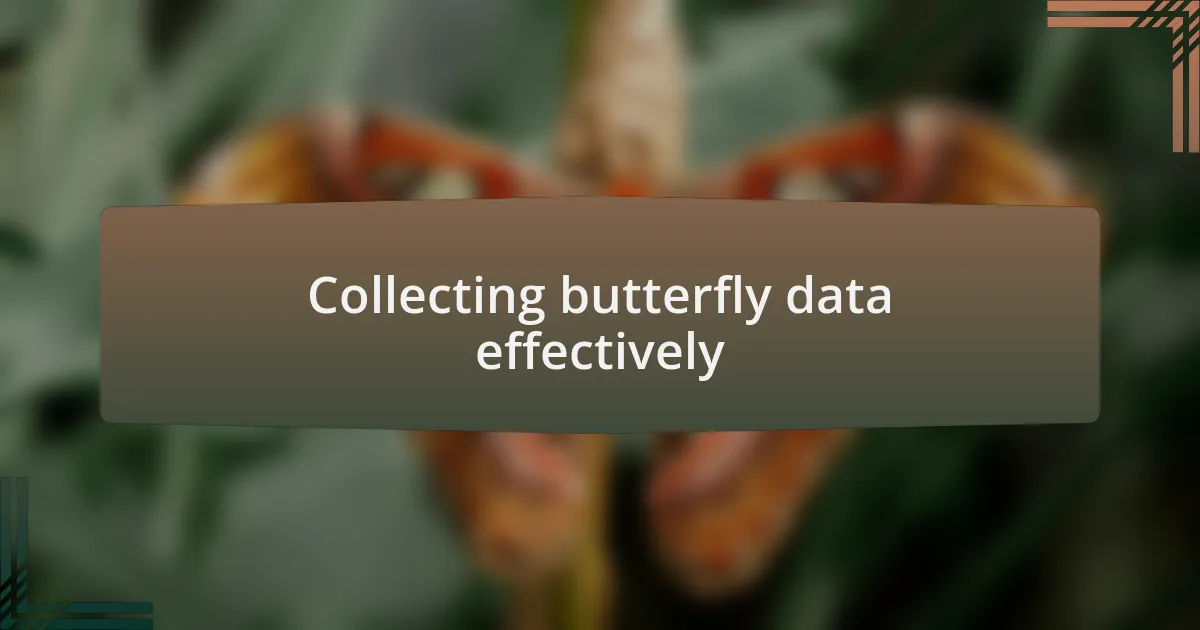
Collecting butterfly data effectively
When I collect butterfly data, I always make sure to stick to a consistent method. Whether I’m observing in my backyard or a nearby nature reserve, I record the date, time, and weather conditions. I’ve noticed that butterflies are most active on sunny days; it often feels like they’re putting on a show just for me. Have you ever watched how they dance around the flowers? Capturing that moment in my notes feels like preserving a piece of nature’s magic.
Another effective strategy is to immerse myself in diverse habitats. By visiting various ecosystems, I can document different species that might be unique to those areas. I remember my trip to a wetlands reserve where I encountered a stunning Pipevine Swallowtail; it was a rare sight for me. Each environment tells a different story, and by collecting data from multiple locations, I contribute a richer narrative to citizen science. It’s fascinating how the landscape can influence butterfly behavior and presence.
Lastly, engaging with local butterfly monitoring programs has been incredibly rewarding. Through these programs, I not only share my data but also learn from experienced entomologists who recommend best practices. I once joined a group that led a butterfly count event, and it was thrilling to contribute alongside fellow enthusiasts. Isn’t it gratifying to consider how our collective efforts can create a powerful impact for butterfly conservation?
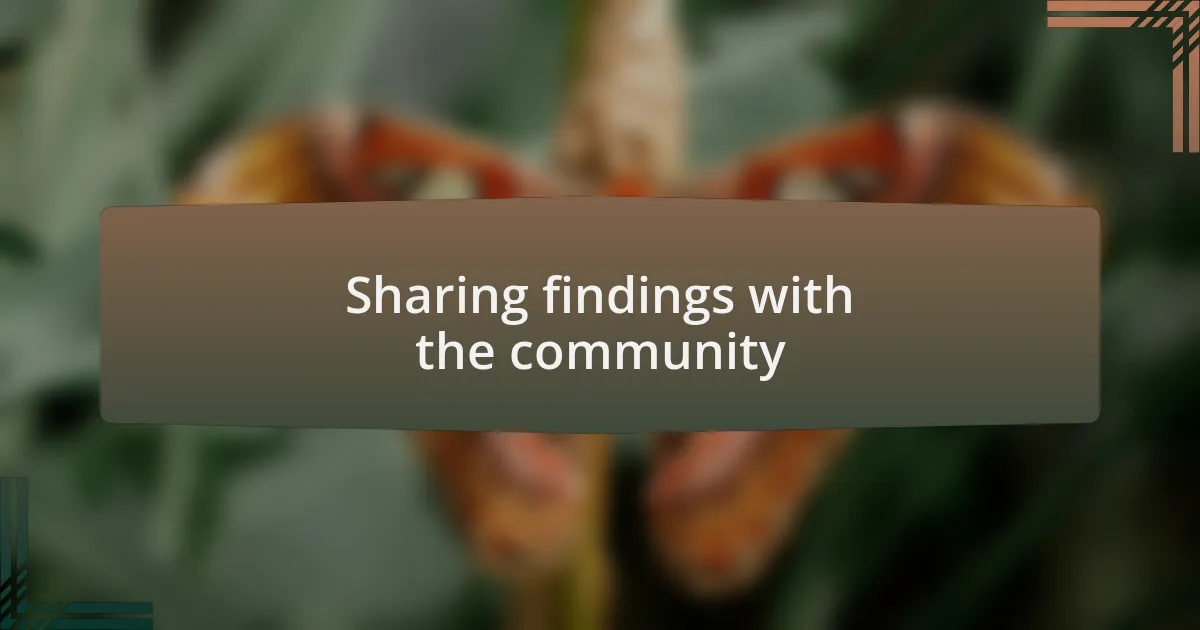
Sharing findings with the community
When it comes to sharing findings with the community, I’ve found that social media can be a great tool. I remember posting photos of my butterfly observations online and, to my surprise, received feedback and stories from others who had similar sightings. It creates an exciting dialogue, doesn’t it? Connecting with fellow butterfly enthusiasts strengthens our shared mission for conservation.
I also enjoy attending local events where I present my findings. The first time I shared my butterfly data at a community garden workshop, I was surprised by the enthusiasm in the room. Listening to others discuss their experiences inspired me to think more critically about my observations. It was incredible to see how sharing information can spark new ideas and enhance our understanding of butterfly behaviors.
Lastly, I’ve participated in citizen science apps that allow users to log and share their observations in real-time. The thrill of seeing my contributions on a shared platform creates a sense of community ownership. Have you ever explored one of these apps? It’s invigorating to know that my small efforts can contribute to a larger conservation project, connecting me with people who are just as passionate about butterflies as I am.
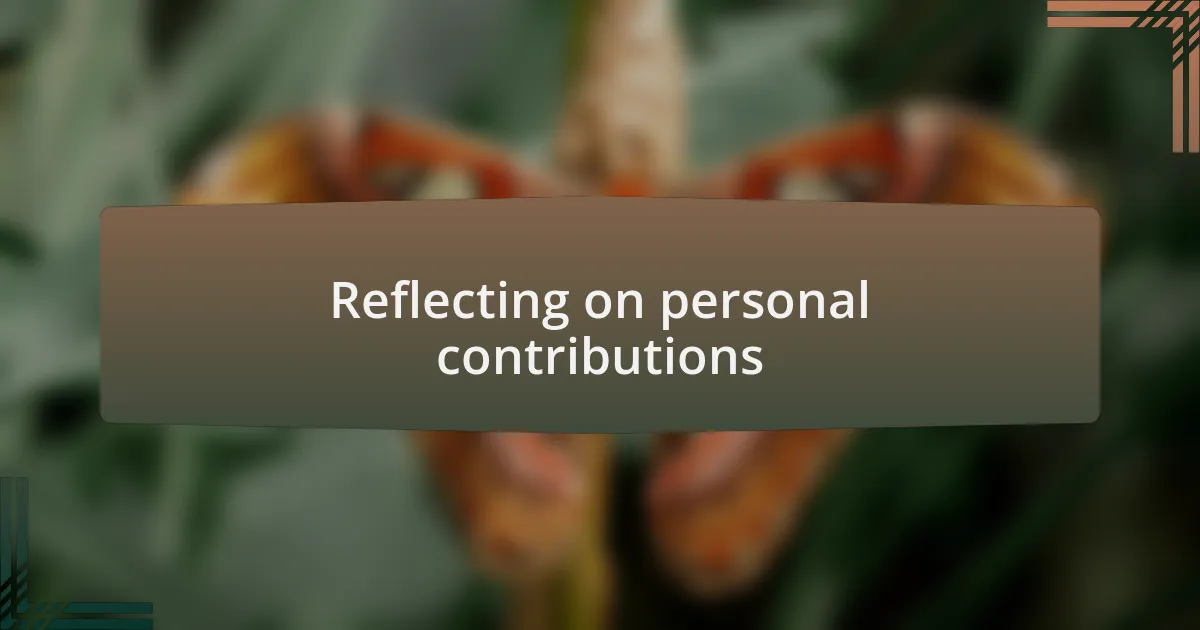
Reflecting on personal contributions
Reflecting on my contributions to butterfly conservation brings a sense of fulfillment that I never anticipated. I remember one warm afternoon, spotting a rare species fluttering in my garden. With my camera in hand, I took several photos and noted its behaviors. Sharing this moment not only ignited my excitement but also contributed valuable data to ongoing research. It made me realize how every observation counts.
In the quiet moments after contributing data, I often think about the ripple effect of my actions. Each butterfly I document adds a piece to the puzzle of understanding their migrations and behaviors. I can’t help but wonder—how many other butterfly enthusiasts are out there, like me, who find joy in connecting their observations to broader conservation efforts? The thought of being part of something larger cultivates a deep sense of purpose.
Sometimes, I feel a blend of pride and responsibility when I reflect on my role in citizen science. It’s rewarding to see my findings help raise awareness among friends and family about the importance of butterfly conservation. Have you ever paused to think about how your individual efforts might inspire those around you? Knowing that I can influence others fuels my passion, making every moment spent observing butterflies feel worthwhile.